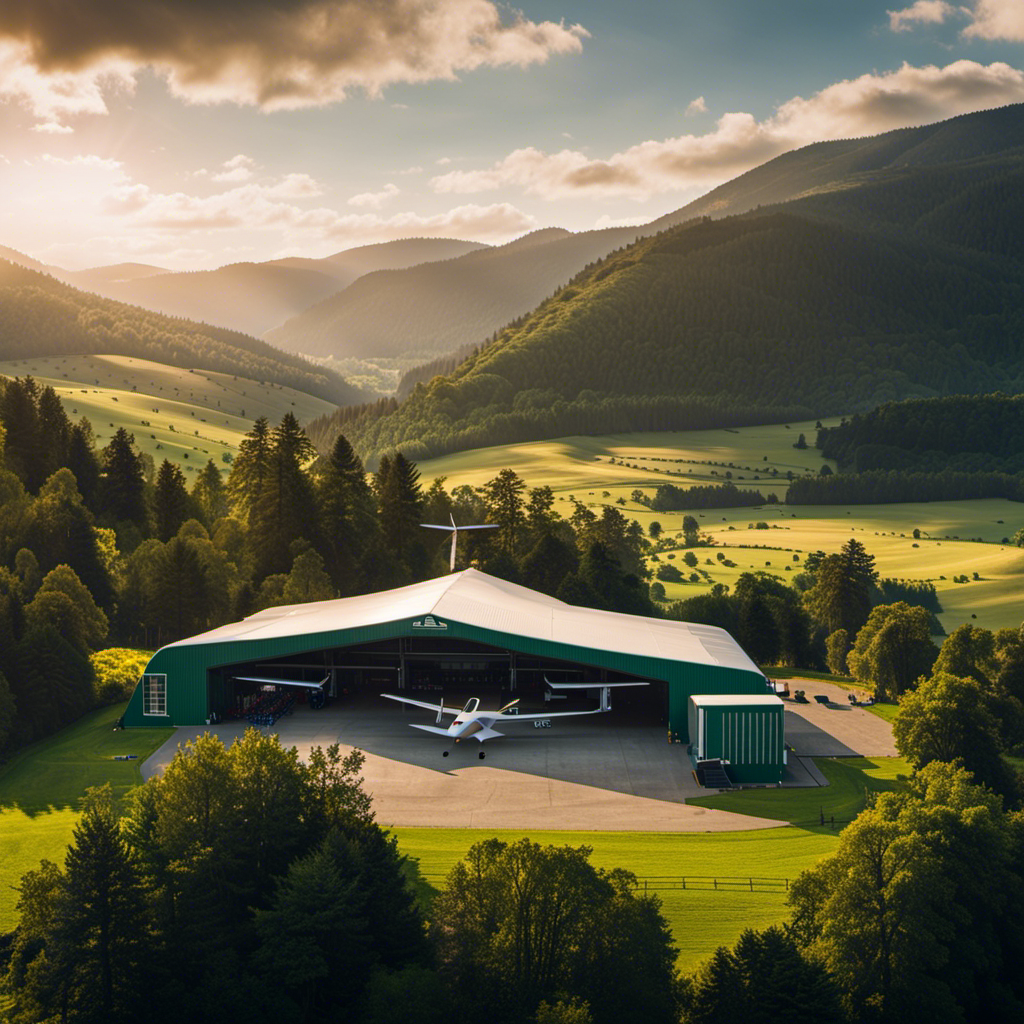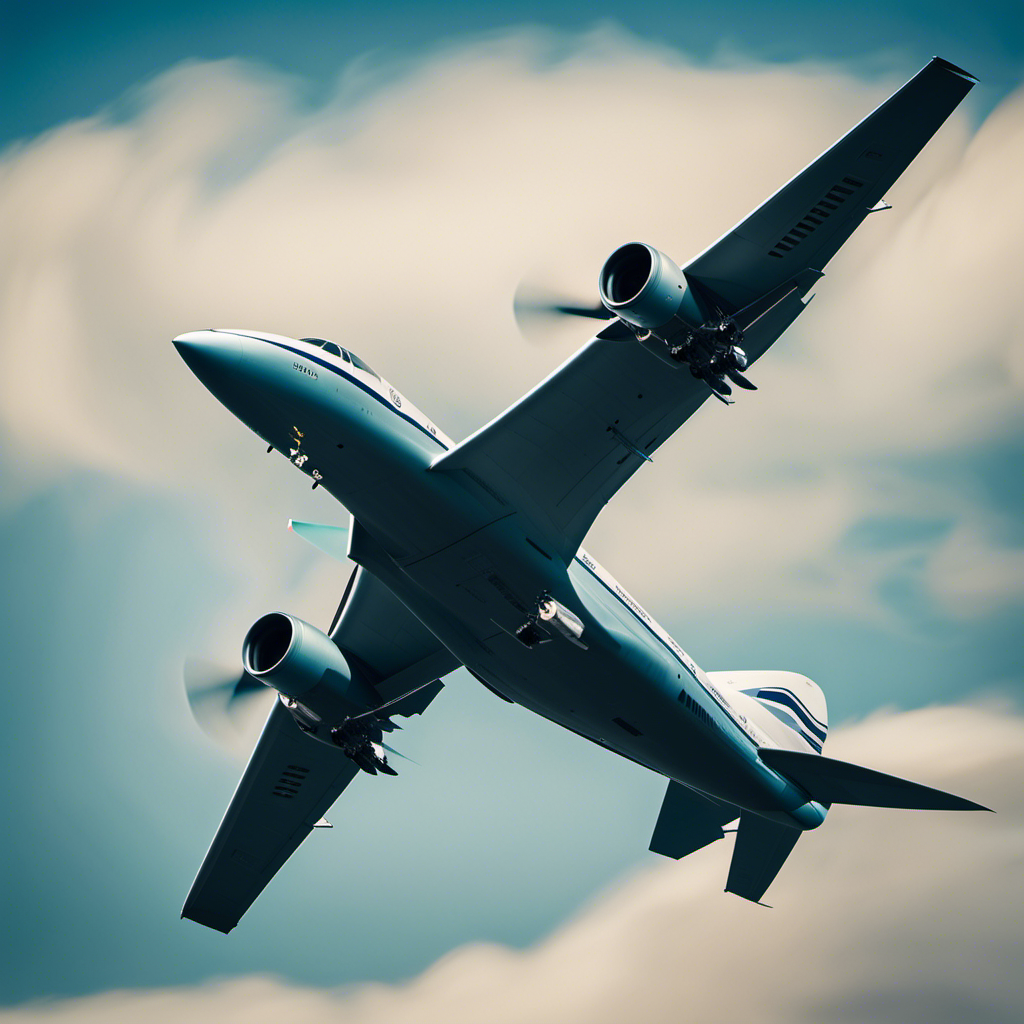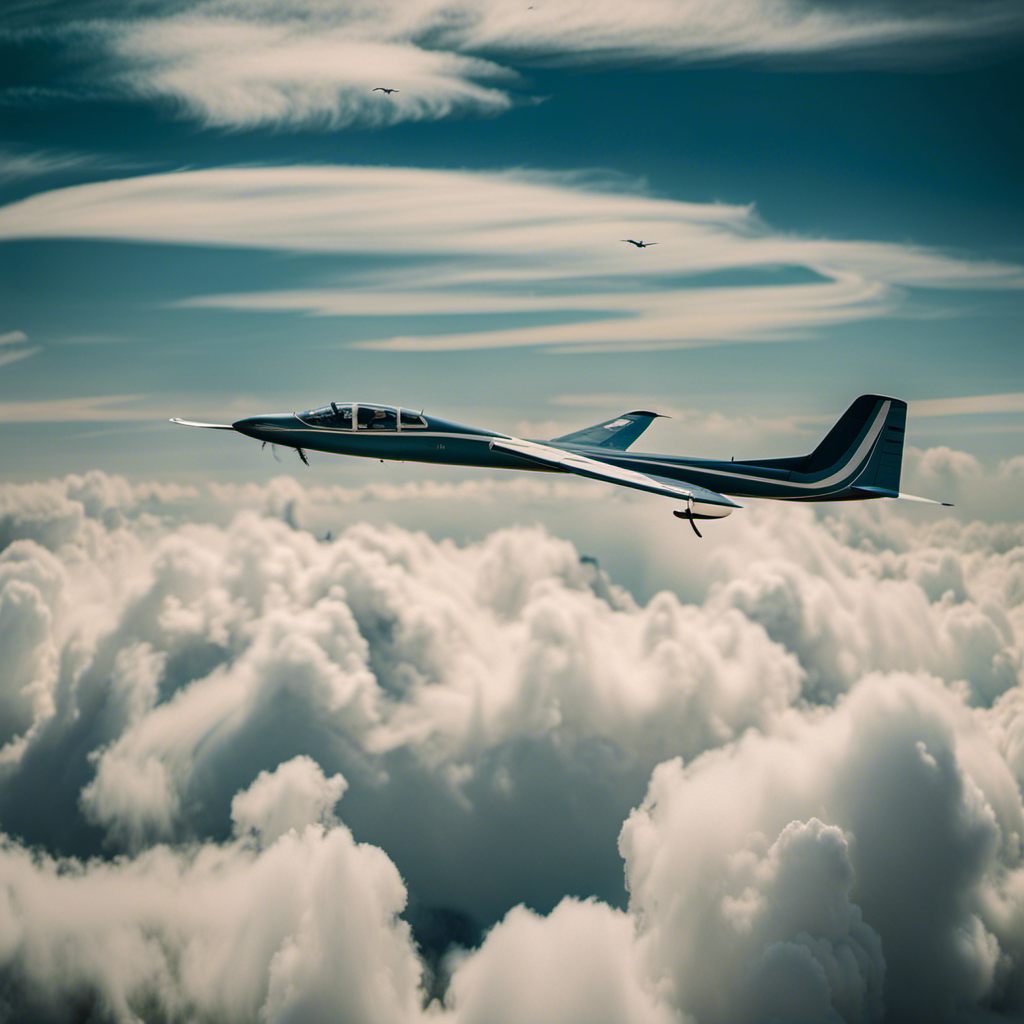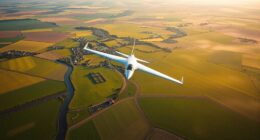I have always been fascinated by the idea of soaring high in the sky, and recently, I have started exploring the world of glider aviation.
But finding the right glider school can be a daunting task. That’s why I’ve delved into the research and compiled a comprehensive guide on key considerations when it comes to choosing a glider school.
From determining your goals and objectives to evaluating the reputation of the instructors, I’ll walk you through everything you need to know.
So, let’s dive in and find the perfect glider school for you.
Key Takeaways
- Look for recognized safety certifications
- Verify instructor qualifications
- Assess course duration and program’s alignment with learning objectives
- Gather insights from past students and consider their recommendations and reviews
Determine Your Goals and Objectives
To determine your goals and objectives, you’ll need to consider what you want to achieve through glider school. Setting objectives is crucial as it helps you stay focused and motivated throughout your training.
Start by asking yourself what you hope to gain from this experience. Are you looking to pursue a career in aviation or simply want to learn to fly for recreational purposes? Identifying your long-term goals will guide you in selecting the right glider school.
When setting objectives, it’s important to be specific and realistic. Do you want to obtain a private pilot license or advance to a commercial glider pilot? Maybe you have a particular type of glider you want to specialize in flying. By clarifying your objectives, you can tailor your training to meet your individual needs.
Moreover, consider the time and financial commitment required to achieve these goals. Are you willing to dedicate several hours a week to training? Can you afford the cost of tuition, equipment, and other associated expenses? Being aware of these factors will help you make an informed decision when choosing a glider school.
Transitioning into the next section, researching different glider schools is key. It allows you to explore the various programs, instructors, and facilities available to find the best fit for your goals and objectives.
Research Different Glider Schools
Start by exploring various glider schools to determine which one suits your needs and preferences. When comparing glider schools, it is important to consider the qualifications and experience of the glider instructors. Look for instructors who have extensive knowledge of glider flying techniques and safety procedures. Finding instructors who are certified by reputable glider associations, such as the Soaring Society of America, can provide assurance of their expertise.
In addition to instructor qualifications, compare the curriculum and training programs offered by different glider schools. Look for schools that provide a comprehensive and structured training program, covering both theoretical knowledge and practical flying skills. Consider the availability of different types of gliders and the opportunity to fly solo as you progress in your training.
Another important factor to consider when comparing glider schools is the location and accessibility. Look for schools that are situated in areas with good weather conditions for gliding, as this can greatly impact the frequency and quality of your training flights. Additionally, consider the proximity of the glider school to your home or workplace, as this can affect the convenience and cost of attending training sessions.
Consider Location and Accessibility
When comparing glider schools, it’s important to take into account the location and accessibility for convenient and cost-effective training sessions. The proximity of the glider school to your home or workplace can greatly affect your ability to attend regular training sessions. Choosing a school that is close by can save you time and transportation costs.
Additionally, considering the transportation options available to reach the school is crucial. Is the school easily accessible by public transportation? Are there nearby airports or train stations? These are important factors to consider when evaluating the location of a glider school.
-
Proximity: Choose a glider school that is conveniently located near your home or workplace to minimize travel time and expenses.
-
Transportation Options: Look for a school that is easily accessible by public transportation or has nearby airports or train stations for convenient travel.
-
Cost-Effectiveness: Consider the overall cost of transportation to and from the glider school when evaluating its location.
Considering these factors will help you find a glider school that is not only convenient in terms of location and accessibility but also cost-effective. Now, let’s move on to another crucial aspect of finding the right glider school: evaluating the reputation and experience of the instructors.
Evaluate the Reputation and Experience of the Instructors
Evaluating the reputation and experience of the instructors is crucial when choosing a glider school. The instructors’ qualifications and teaching methods greatly impact the quality of your training and the skills you acquire. To help you make an informed decision, consider the following factors:
| Qualifications | Teaching Methods |
|---|---|
| – FAA certifications | – Individualized instruction |
| – Number of flight hours | – Ground and flight simulations |
| – Experience with different glider types | – Progress tracking and feedback |
| – Teaching licenses or endorsements | – Safety protocols and emergency procedures |
| – Previous students’ achievements | – Integration of technology for instruction |
By assessing the qualifications of the instructors, you can ensure that they have the necessary certifications and experience to provide effective training. Additionally, their teaching methods should align with your learning style and preferences. Look for a glider school that offers individualized instruction, as this will allow you to progress at your own pace and receive personalized feedback.
Transitioning into the next section, it is important to also look into the fleet and equipment available at the glider school. The quality and condition of the gliders, as well as the availability of necessary equipment, will play a significant role in your training experience.
Look into the Fleet and Equipment Available
To ensure a quality training experience, you’ll want to check out the fleet and equipment available at the glider school. The condition and maintenance of the school’s fleet are crucial factors to consider. A well-maintained fleet indicates that the glider school takes safety and training seriously. Regular maintenance ensures that the gliders are in excellent condition, reducing the risk of mechanical failures during flights.
In addition to fleet maintenance, it’s important to look into equipment upgrades. Glider technology is constantly evolving, and schools that invest in upgrading their equipment demonstrate their commitment to providing the best training experience. Upgraded equipment not only enhances safety but also contributes to a more efficient and enjoyable learning process.
When evaluating the fleet and equipment, consider the variety of gliders available. A diverse fleet allows you to gain experience with different types of gliders, preparing you for a range of flying conditions and scenarios. It is also worth checking if the school has advanced training equipment such as flight simulators, which can greatly enhance your learning experience.
Check for Safety Certifications and Standards
When considering which glider school to choose, it’s important to not only examine the fleet and equipment available, but also to ensure that the school meets safety certifications and standards. This is crucial for a successful and secure learning experience.
To ensure the glider school prioritizes safety, here are some key considerations to keep in mind:
-
Certifications and Accreditations: Look for schools that have obtained recognized safety certifications, such as those provided by the International Gliding Commission (IGC) or the Soaring Society of America (SSA). These certifications indicate that the school has met stringent safety standards and adheres to best practices.
-
Instructor Qualifications: Verify that the instructors at the glider school hold the necessary certifications and qualifications. They should have extensive experience in glider flying and be trained to teach students effectively and safely.
-
Safety Protocols and Procedures: Inquire about the safety protocols and procedures implemented by the school. A reputable glider school will have well-defined safety protocols in place, including pre-flight checks, emergency procedures, and a culture of safety awareness.
By ensuring that the glider school has the appropriate safety certifications and standards, you can have peace of mind knowing that your training program will prioritize safety above all else.
In the next section, we will review the training program and curriculum to further evaluate the suitability of the glider school.
Review the Training Program and Curriculum
The training program and curriculum should be thoroughly examined to ensure they align with your goals and learning objectives. It is essential to review the program to determine if it covers all the necessary theoretical and practical aspects of glider flying. Additionally, evaluating the curriculum will help you understand the structure and progression of the training, ensuring that it is comprehensive and well-organized.
To assist you in assessing the training program and curriculum effectively, consider the following table:
| Aspect | Importance | Review Criteria |
|---|---|---|
| Course Duration | High | Is the program long enough to cover all essential topics? |
| Ground Instruction | High | Are theoretical concepts adequately taught? |
| Flight Instruction | High | Is there enough hands-on experience provided? |
By reviewing these aspects, you can get a clear understanding of what the training program entails and whether it meets your expectations. Once you have thoroughly reviewed the program and curriculum, you can confidently move forward to assess the cost and financial considerations involved in pursuing your glider flying journey.
Transitioning seamlessly into the next section, it is crucial to evaluate the cost and financial considerations of the chosen glider school to ensure it aligns with your budget and financial goals.
Assess the Cost and Financial Considerations
Evaluate how the cost and financial factors of the glider school fit within your budget and align with your financial goals. When considering which glider school to attend, it is essential to assess the cost and financial implications.
Conducting a cost comparison is an effective way to determine which school offers the most value for your investment. Look into the tuition fees, as well as any additional expenses such as accommodation or equipment costs. Some glider schools may offer financial aid options, such as scholarships or grants, which can help alleviate some of the financial burden. Explore these opportunities and consider if they align with your financial goals and circumstances.
It is crucial to ensure that the cost of attending the glider school does not outweigh the benefits and potential outcomes. While affordability is important, it is equally essential to assess the quality of the training program and the reputation of the school.
Seek recommendations and reviews from past students to gain insight into their experiences and outcomes. By considering both the financial aspects and the overall quality of the glider school, you can make an informed decision that aligns with your goals.
Seek Recommendations and Reviews from Past Students
Seeking recommendations and reading reviews from past students can provide valuable insights when deciding which glider school to attend. As an aspiring pilot, I understand the importance of gathering information from those who have already gone through the training process. By seeking recommendations, I can tap into the experiences and opinions of others who have firsthand knowledge of the glider schools I am considering.
Evaluating reviews allows me to gain a deeper understanding of the strengths and weaknesses of each school. Reviews provide valuable information about the quality of instruction, the condition of the gliders, and the overall learning environment. I can learn about the success rate of students, the professionalism of the instructors, and any potential drawbacks or limitations.
Schedule a Visit and Interview with the School
When scheduling a visit and interview with a school, you’ll have the opportunity to see the facilities firsthand and get a sense of the learning environment. This step is crucial in finding the right glider school for your needs.
Here are some key considerations to keep in mind when scheduling appointments and interviewing instructors:
-
Facilities: Take note of the condition and maintenance of the gliders and other equipment. A well-maintained facility can indicate a school’s commitment to safety and professionalism.
-
Instructors: Observe how the instructors interact with students. Are they knowledgeable, patient, and supportive? The quality of instruction can greatly impact your learning experience.
-
Curriculum: Inquire about the school’s curriculum and training methods. Are they comprehensive and up-to-date? A well-structured program can ensure you receive the necessary knowledge and skills.
-
Safety Protocols: Ask about the school’s safety protocols and procedures. How do they handle emergencies? Safety should be a top priority, and a school that prioritizes it will provide you with peace of mind.
Frequently Asked Questions
What are the prerequisites or qualifications required to enroll in a glider school?
To enroll in a glider school, you need to meet certain prerequisites and qualifications. These typically include a minimum age requirement, physical fitness, and sometimes a valid pilot’s license or medical certificate.
How long does it typically take to complete the training program and obtain a glider pilot license?
On average, completing a glider training program and obtaining a glider pilot license takes around 6-12 months. The process involves ground instruction, flight training, solo flights, and passing written and practical exams.
Are there any age restrictions for enrolling in a glider school?
There are generally no age restrictions for enrolling in a glider school. However, some schools may have specific enrollment qualifications, such as a minimum age requirement or physical fitness criteria.
Can I bring my own glider or equipment to the school?
Sure! Unfortunately, bringing your own glider or equipment to the school is not allowed. Our training program is comprehensive and provides all the necessary equipment. The duration of training varies depending on individual progress.
Are there any ongoing support or mentorship programs available after completing the training?
Yes, many glider schools offer ongoing support programs and mentorship opportunities after completing training. These programs provide continued guidance and assistance to help pilots further develop their skills and knowledge in the sport of gliding.
Conclusion
In conclusion, finding the right glider school requires careful consideration of various factors.
Firstly, it is important to determine your goals and objectives. This will help you narrow down your options and find a school that can meet your specific needs.
Next, researching different schools is essential. Look into their reputation, read reviews, and gather information about their instructors and training programs.
Consider the location and accessibility of the school. It should be convenient for you to travel to and from the school, as well as have access to suitable flying conditions.
Evaluating the reputation and experience of instructors is crucial. You want to learn from experienced and knowledgeable instructors who can provide quality training.
The fleet and equipment available at the school is another important consideration. Make sure they have well-maintained gliders and necessary safety equipment.
Take a close look at the training program and curriculum offered by the school. It should be comprehensive and cover all the necessary topics and skills.
Assessing the cost of the training is also important. Consider your budget and compare the costs of different schools to find one that offers good value for money.
Seeking recommendations from past students can provide valuable insights. Talk to people who have already trained at the school to get their opinions and experiences.
Lastly, appearances can be deceiving, so it is important to schedule a visit and interview with the school. This will give you a chance to see the facilities and meet the instructors, ensuring that the school aligns with your needs and expectations.
Remember, finding the right glider school is a significant decision, so take your time and make an informed choice.









